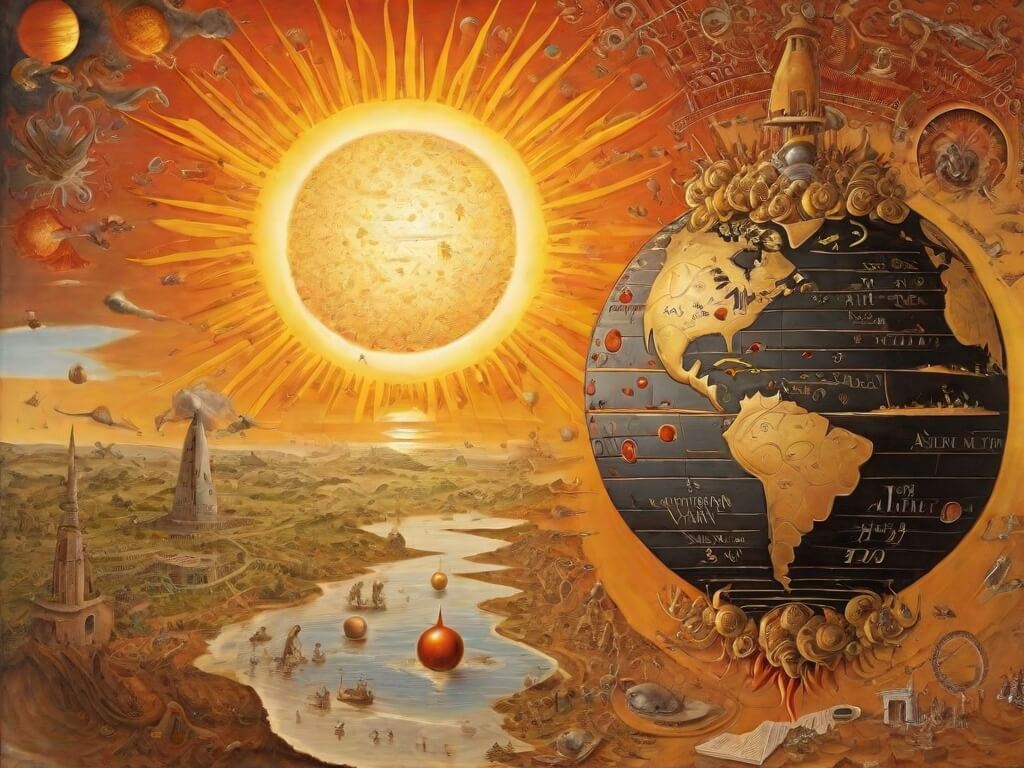Explore the intricacies of time measurement with a scientific dive into years and light-years. From Earth’s orbit to the cosmic distances covered by light, discover the fascinating dimensions of our temporal and celestial landscapes. 🌍✨

A year is a unit of time representing the orbital period of the Earth around the Sun. It is approximately 365.25 days long, defining the time it takes for the Earth to complete one full orbit. This period is divided into months and is the basis for our calendar systems. The Earth’s axial tilt also contributes to the changing seasons during the year. Different cultures and societies have developed various calendar systems to organize and measure time based on this astronomical cycle.
Scientific Explanation of One Year:
A year is defined as the time it takes for the Earth to complete one orbit around the Sun. This period is approximately 365.25 days long. The Earth’s orbit is elliptical, and it is divided into four seasons based on its axial tilt. The key astronomical events related to a year include the vernal equinox (around March 20-21), when day and night are approximately equal, and the autumnal equinox (around September 22-23), marking the beginning of fall.
Historically, the concept of a year has been crucial for agriculture, navigation, and timekeeping. Various cultures developed calendars to track the passage of a year, aligning with celestial events. The Gregorian calendar, the most widely used calendar today, introduced leap years to account for the extra 0.25 days in a tropical year.

Calculation of a Year:
To calculate a year, astronomers use the tropical year, the time between successive vernal equinoxes. The average length of a tropical year is approximately 365.2422 days. The Gregorian calendar, which most of the world follows, accounts for this by adding a leap day to the month of February every four years.
In mathematical terms: Tropical Year=365 days+0.2422 days (approximately)
This precision ensures that our calendars remain in alignment with the Earth’s orbit around the Sun. The concept of a year reflects the Earth’s journey through space and has played a fundamental role in human societies for millennia.
How long is a year?
A year is approximately 365.25 days long. This is the time it takes for the Earth to complete one orbit around the Sun. To account for the extra fraction of a day, we add an extra day to the calendar every four years, creating a leap year with 366 days instead of the usual 365. This adjustment helps align our calendar with the Earth’s orbit, maintaining a more accurate measurement of the passage of time.
What is a tropical (solar) year?
A tropical year, also known as a solar year, is the time it takes for the Earth to complete one full orbit around the Sun, measured from one vernal equinox to the next. The vernal equinox is the point in Earth’s orbit where the plane of the celestial equator intersects the ecliptic, and day and night are of approximately equal length.
The duration of a tropical year is about 365.2422 days. To account for this, our calendar system includes leap years (adding an extra day) at regular intervals to keep our calendars in alignment with the Earth’s orbit around the Sun. The length of a tropical year is essential for organizing and coordinating the human calendar, helping us mark seasons and plan various activities based on the changing position of the Earth in its orbit.

What is a light year?
A light-year is a unit of distance, not time. It represents the distance that light travels in one year in the vacuum of outer space. Light travels at a speed of approximately 299,792 kilometers per second (186,282 miles per second) in a vacuum. Therefore, in one year, light can cover a vast distance.
To calculate the distance in a light-year, you can use the formula:
Distance (in light-years)=Speed of Light×Time (in years)
So, a light-year is about 9.461×1012 kilometers or approximately 5.879×1012 miles.
Light-years are commonly used in astronomy to measure the vast distances between stars and galaxies. For example, the nearest star system to Earth, Alpha Centauri, is about 4.37 light-years away.